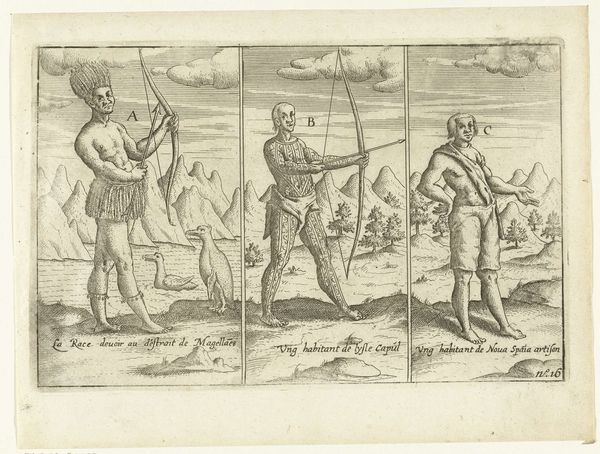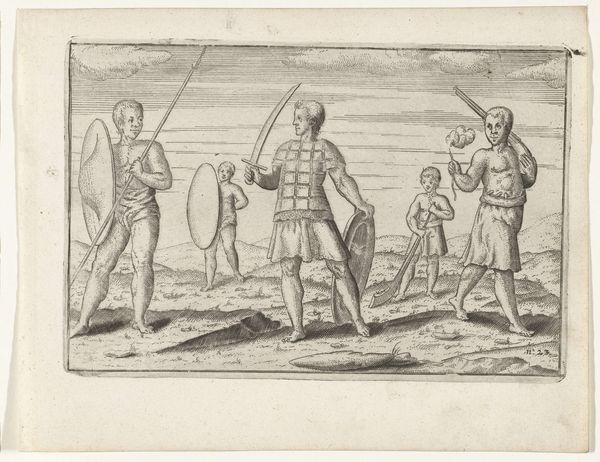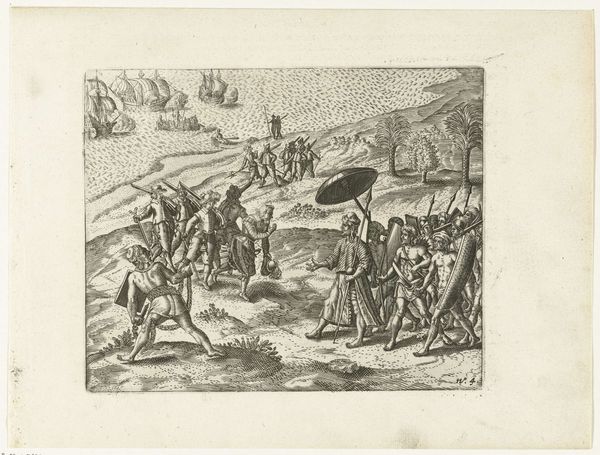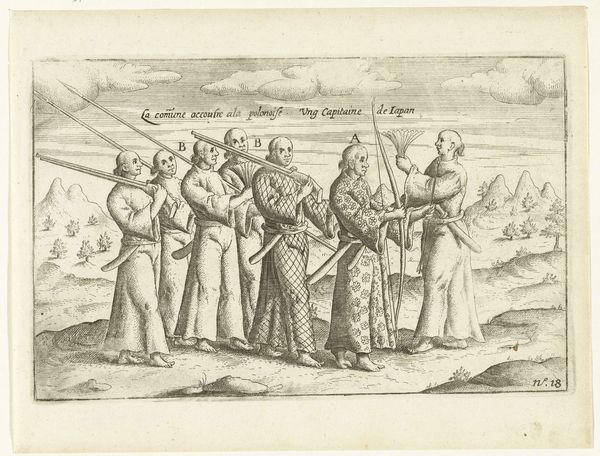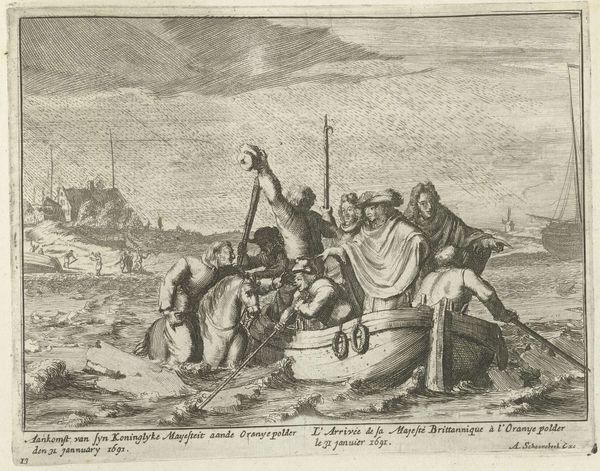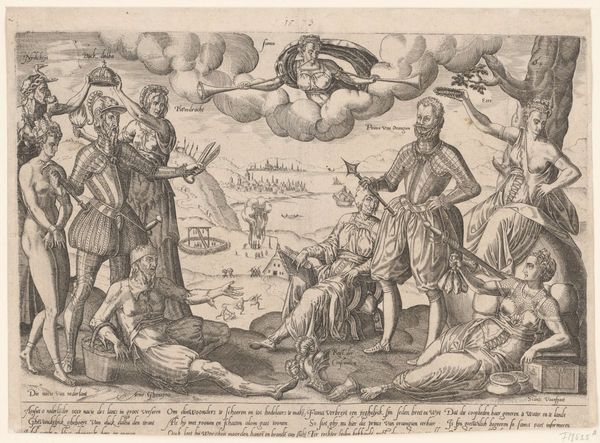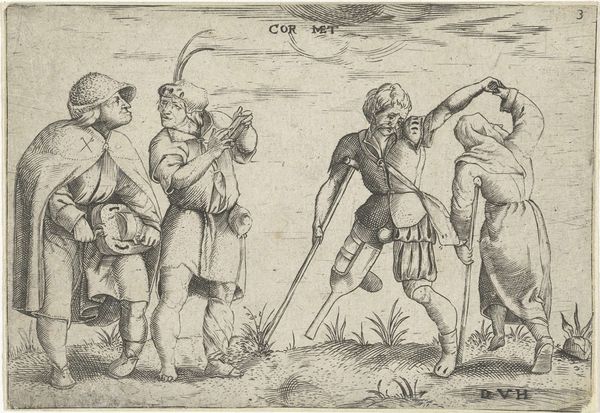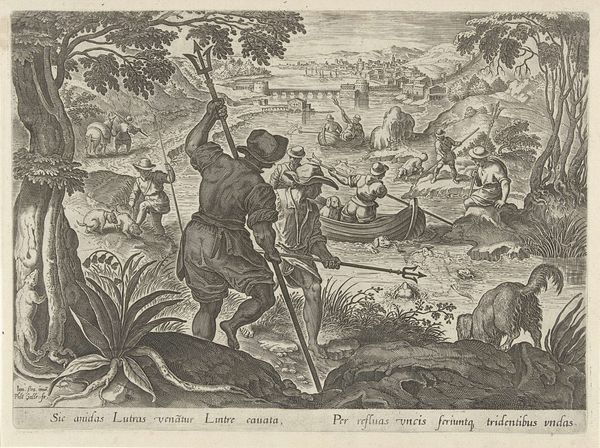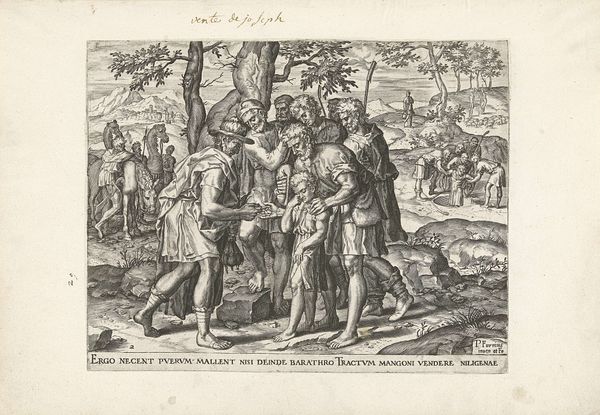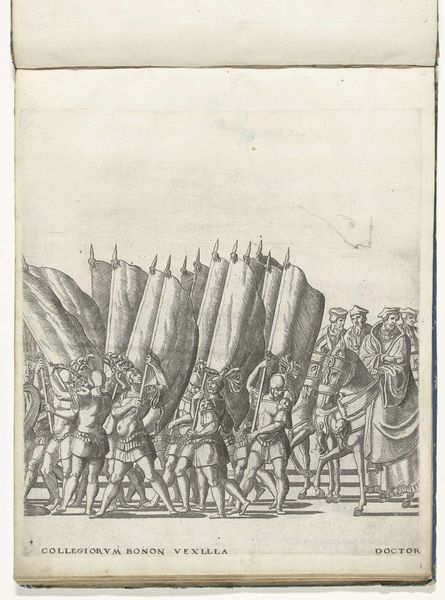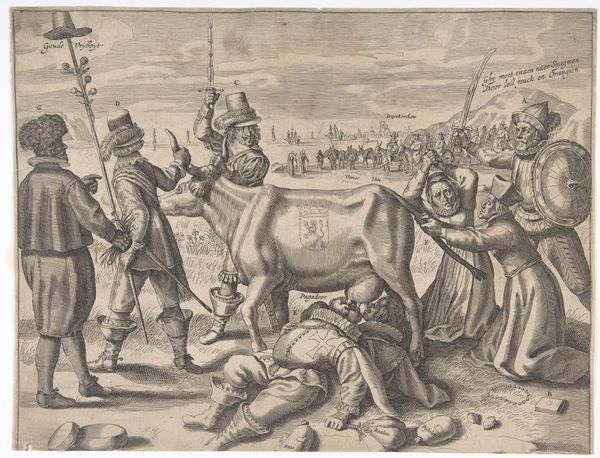
Samojeden met pijl en boog, op de achtergrond een rendierslee en demonstraties van het schieten met een musket, 1595 1615 - 1617
0:00
0:00
print, engraving
#
narrative-art
# print
#
asian-art
#
landscape
#
figuration
#
history-painting
#
engraving
Dimensions: height 140 mm, width 183 mm
Copyright: Rijks Museum: Open Domain
Curator: This is an engraving attributed to an anonymous artist, likely dating from 1615 to 1617. It's titled "Samojeden met pijl en boog, op de achtergrond een rendierslee en demonstraties van het schieten met een musket, 1595," held here at the Rijksmuseum. My immediate sense is that it evokes a sort of…stark documentary quality. The figures feel staged, almost. Editor: Documentary, yes, but to what end? The crisp lines and careful etching give it a precise, manufactured feel, like a broadside designed for a specific purpose. Look at the clothing: it appears very specifically rendered. It's not just warmth but material that signifies something. What's your take on the figures themselves? Curator: The two figures certainly stand out. Their direct gaze, coupled with the more chaotic scene behind them...it strikes me as an assertion of control. Consider the detail placed upon their traditional clothing. They aren't simply clad for survival, but portrayed with clear symbolic meaning. I see the bows as signs of mastery over the land and sustenance. Editor: Mastery indeed, but what does "mastery" mean in this context? This engraving serves less as pure observation, more as evidence of expanding influence. This piece, viewed through a Materialist lens, suggests that clothing signifies not merely the individual or the culture itself, but this burgeoning trade and knowledge production connected to Dutch exploration and control of resources. The bow and arrow are not merely tools, but also symbolic markers to trade. Curator: And what of the firearms demonstration in the background? Clearly included as a testament to the "superior" technology. But note how small they are in the grand scheme of this print. The power of that "new" weapon still plays second fiddle to the Samoyeds. This placement creates a stark contrast. A bow has spiritual power, I'm certain, even with new options entering this world. Editor: I agree there is tension— the artist deliberately uses both primitive (bow and arrow, reindeer sled) and cutting edge technologies to signify change and to remind the target consumer of Dutch trade power and value! That "progress" requires resources—the animals hunted in the background, the land depicted—are not free for the taking but have a labor and trade connection for everyone involved. It all exists in the picture together in a state of... exchange. Curator: It's fascinating to see these interwoven layers of meaning unfold within what seems like a straightforward depiction. Thanks for emphasizing those undercurrents. I find that the quiet strength of the central figures is what I will carry forward, after our talk. Editor: Absolutely, an artifact's truth is layered. It allows us to consider cultural narratives of its time alongside social and economic frameworks. These Samoyeds in a printed document remind us that all artwork, from monumental sculpture to minor broadside prints, hold many stories.
Comments
No comments
Be the first to comment and join the conversation on the ultimate creative platform.
